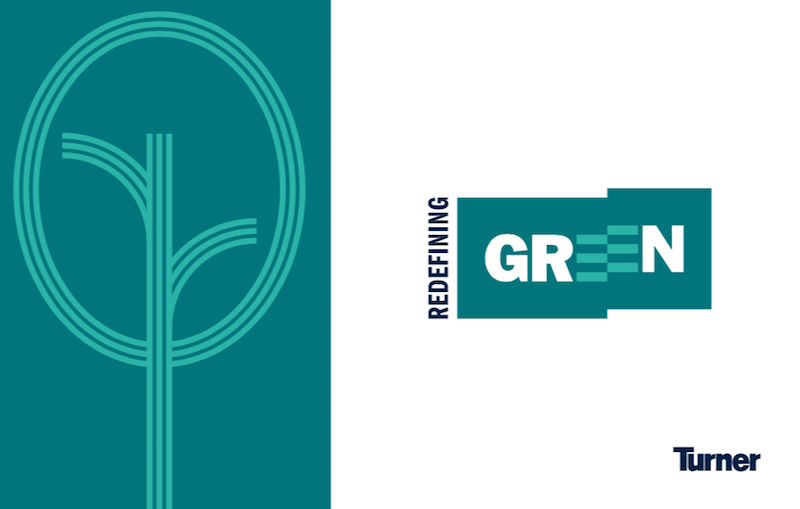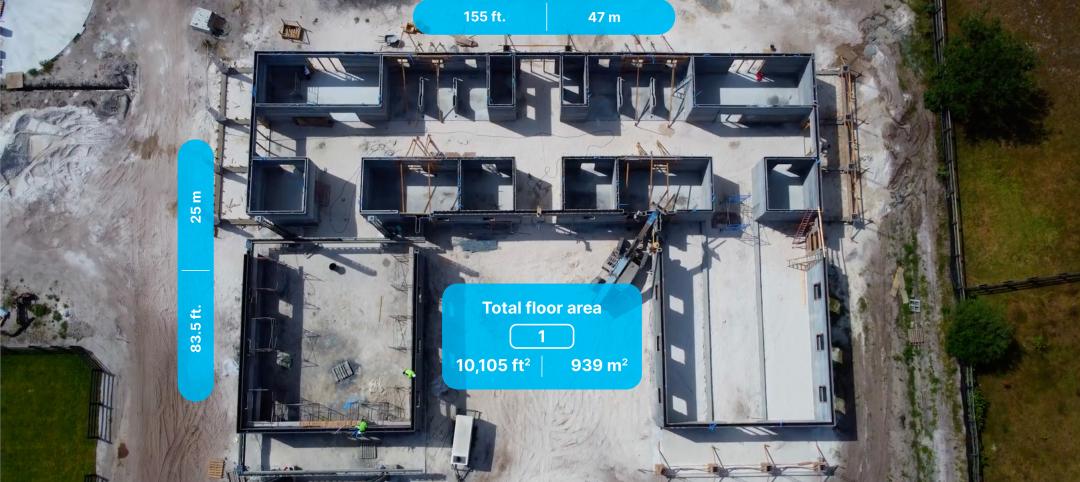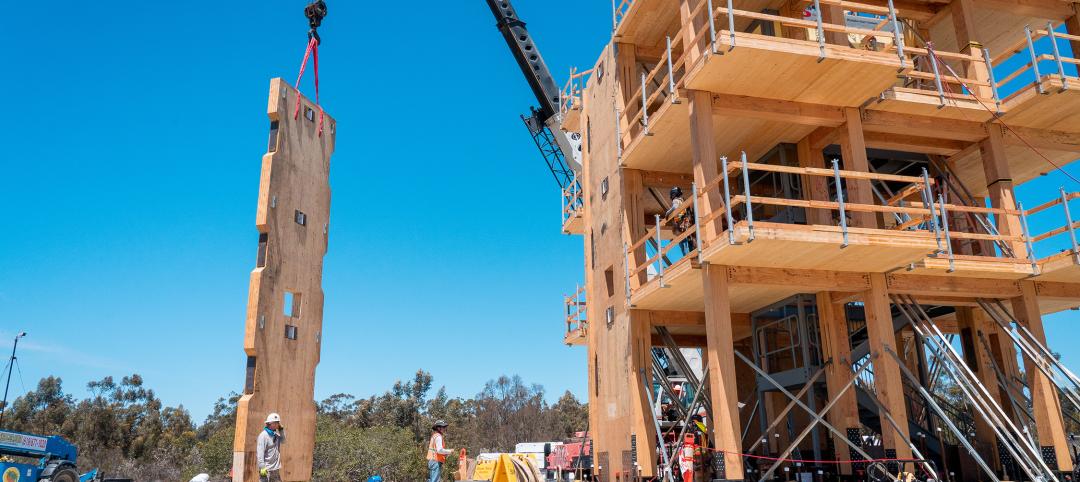Today is Earth Day, and this morning, Turner Construction made public an ambitious program that could burnish its standing as a green builder.
This three-pronged initiative starts with Turner reaffirming its commitment, made in 2004, to “build green.” Over the past 15 years, Turner has worked on more than $60 billion of green building projects. The company has 1,500 LEED-accredited employees. It now diverts, on average, 75% of jobsite waste from landfills. And three years ago, it formed a National Sustainability Committee, currently comprised of 16 people who look for innovative strategies to apply to the company’s various projects.
Turner is taking this commitment to another level today, as it will monitor the activities on certain jobsites to see where water and energy consumption can be lowered. It has selected 30 projects, across different building typologies, to participate in a pilot program that, over the next 18 months, will meter those projects on all forms of C02 emissions and water use, including onsite fuel use.
The company will compile these data through the end of 2020, it which point it hopes to have a normalized average for emissions and water use per building. Using those averages, Turner will then devise a strategy to reduce water and energy use by 50% on all of its projects by 2030. (To see images of a project being metered—the Natural Resources Agency headquarters for the California Department of General Services, in Sacramento, Calif.—go to https://app.oxblue.com/open/Turner/NNRHPROJECT)
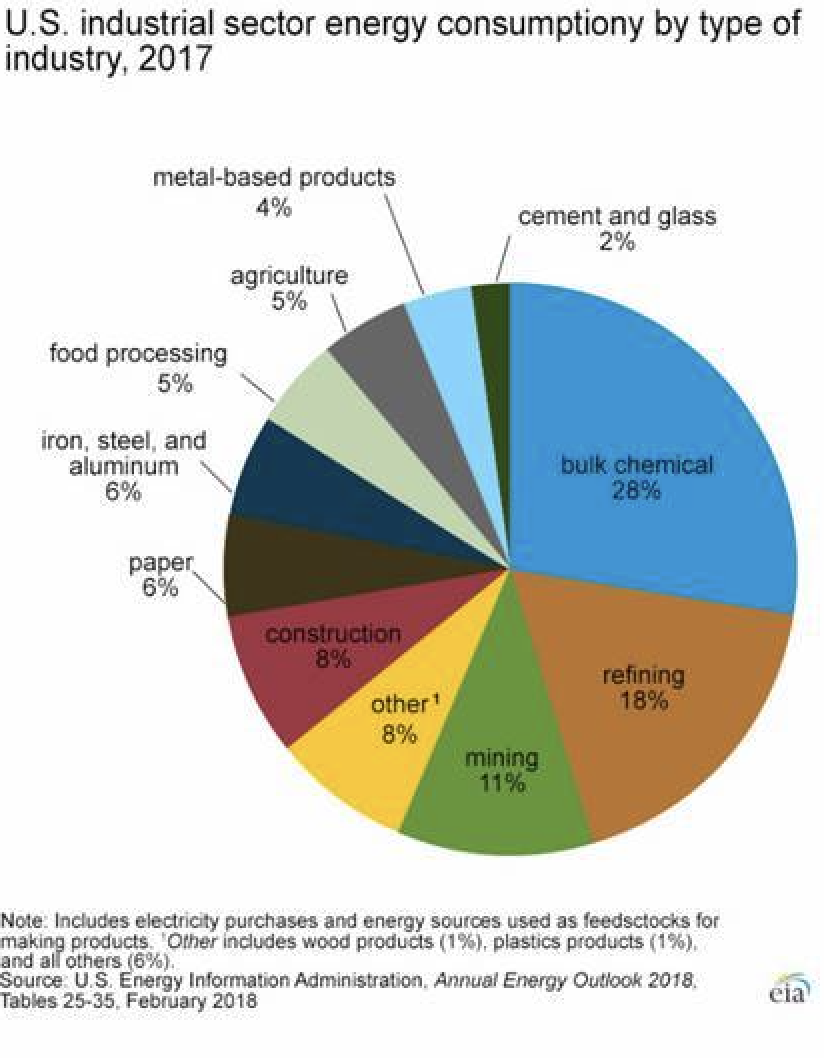
Construction activities account for 8% of industrial sector's energy use. Turner is monitoring select jobsites to determine how they can reduce water and energy use. Image: U.S. Energy Information Administration
The company also has about 40 sustainability managers who provide technical support and guidance to its regional offices. They are “our green ambassadors,” and “eyes and ears on the ground,” says Julia Gisewite, whom Turner promoted to Director of Sustainability last September. Gisewite is spearheading the company’s initiative with Tom Gerlach, an Executive Vice President who has been with Turner Construction since 1977; and Peter Davoren, the company’s President and CEO.
The third pillar of Turner’s initiative focuses on resilience. Turner is responding to the threats from natural disasters such as flooding and fires that “are getting bigger and bigger,” and “are becoming more intense,” says Christopher McFadden, a company spokesman. He explains that Turner is now looking closer at the welfare and safety of its workers under those conditions, as well as “the range of resilience for the built environment,” with the goal being to develop ways that it can strengthen buildings’ resistance.
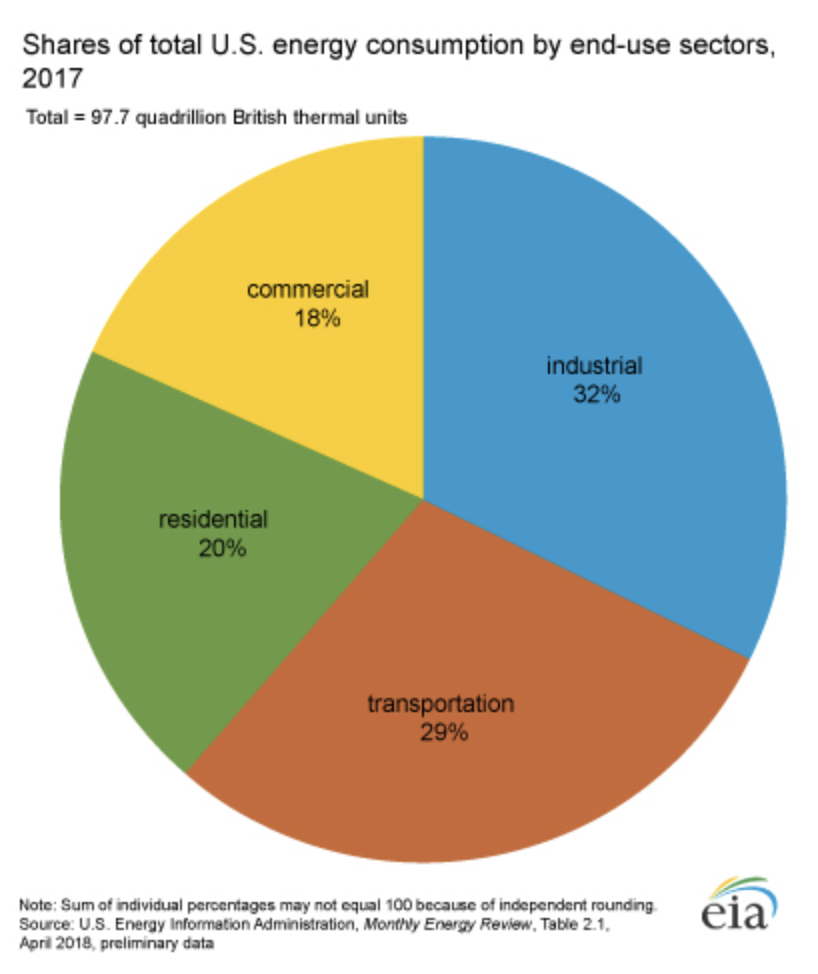
The built environment continues to be a massive energy user. Image: U.S. Energy Information Administration
“We want to be a voice at the table, and a stronger, better partner,” especially during preconstruction discussions with owners, developers, and AEC partners. Gisewite adds that Turner has started to insinuate resilience and resource awareness into its orientation of workers and subcontractors.
Getting back to its construction activities, Turner already has some baseline data: its annual Turner Green Zone survey, which it has conducted for the last seven years, and which guides how the company sets up its offices. That survey “has given us the confidence to move forward” with its initiative, says McFadden.
Gisewite says that some of the activities monitored will be “low-hanging fruit,” like turning off lights and equipment in jobsite trailers every night. She adds, too, that Turner is now committed to installing LEDs for those sites’ temporary lighting.
“We’re looking at what we can control,” says McFadden.
Gisewite envisions holding meetings with subcontractors and suppliers about jobsite efficiency. Nothing’s been scheduled yet, but she expects these meetings will most likely happen regionally, and some could also be project-by-project.
The Turner execs agree that technology will play a role in the company’s program. “The conversation around carbon has elevated so quickly,” she says, “and I’m most excited about the technology” that might provide answers. McFadden adds that Turner recently completed its 5th annual Innovation Summit, and that its jobsites are already using augmented and virtual reality tools to help reduce waste by using fewer materials.
He recalls that in the early 1900s, Turner Construction made a name for itself by building with steel-reinforced concrete as an alternative to lumber at a time when wood-made factories were burning down. Today, that same mentality of taking the lead is what’s driving Turner’s environmental stewardship as well as efforts to make buildings better able to withstand the ravages of nature.
“We’re asking ‘what can we be doing?’ because we should be doing more,” McFadden says.
Related Stories
3D Printing | Jun 20, 2023
World's largest 3D-printed building completed in Florida
Printed Farms, known for completing Florida’s first permitted 3D-printed house in Tallahassee, announces the completion of the world’s largest 3D-printed building: a luxury horse barn.
Resiliency | Jun 14, 2023
HUD offers $4.8 billion in funding for green and resilient building retrofit projects
The Department of Housing and Urban Development (HUD) recently released guidelines for its Green and Resilient Retrofit Program (GRRP) that has $4.8 billion for funding green projects.
Engineers | Jun 5, 2023
How to properly assess structural wind damage
Properly assessing wind damage can identify vulnerabilities in a building's design or construction, which could lead to future damage or loss, writes Matt Wagner, SE, Principal and Managing Director with Walter P Moore.
Energy-Efficient Design | Jun 5, 2023
Implementing an ‘asset drawdown strategy’ for site decarbonization
Solidifying a decarbonization plan via an “asset drawdown strategy” that carefully considers both capital and operating costs represents a game-changing opportunity for existing properties to compete with new projects.
Cladding and Facade Systems | Jun 5, 2023
27 important questions about façade leakage
Walter P Moore’s Darek Brandt discusses the key questions building owners and property managers should be asking to determine the health of their building's façade.
Mass Timber | Jun 2, 2023
First-of-its-kind shake test concludes mass timber’s seismic resilience
Last month, a 10-story mass timber structure underwent a seismic shake test on the largest shake table in the world.
3D Printing | May 12, 2023
World’s first 3D-printed medical center completed
3D construction printing reached new heights this week as the world’s first 3D-printed medical center was completed in Thailand.
Sustainability | May 11, 2023
Let's build toward a circular economy
Eric Corey Freed, Director of Sustainability, CannonDesign, discusses the values of well-designed, regenerative buildings.
Resiliency | Apr 18, 2023
AI-simulated hurricanes could aid in designing more resilient buildings
Researchers at the National Institute of Standards and Technology (NIST) have devised a new method of digitally simulating hurricanes in an effort to create more resilient buildings. A recent study asserts that the simulations can accurately represent the trajectory and wind speeds of a collection of actual storms.
Urban Planning | Apr 12, 2023
Watch: Trends in urban design for 2023, with James Corner Field Operations
Isabel Castilla, a Principal Designer with the landscape architecture firm James Corner Field Operations, discusses recent changes in clients' priorities about urban design, with a focus on her firm's recent projects.


